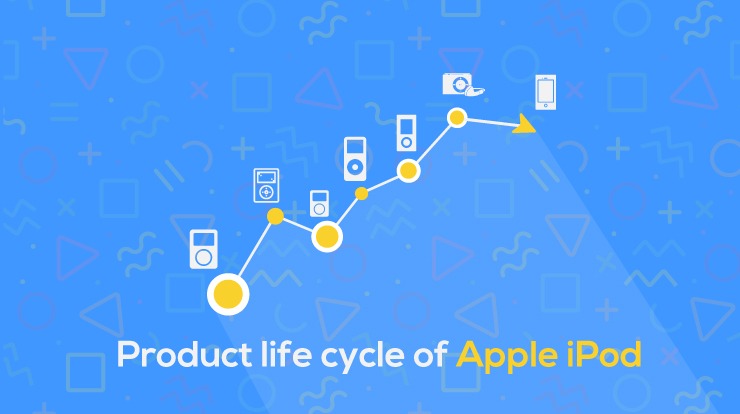
This article is not just about the Product Life Cycle of Apple iPod. This is an article that traces the journey of the iPod, from birth till date.
Apple iPod was launched in October 2001, and it completely changed the way we listen to music, as claimed by Steve Jobs during the launch of the iPod. Before the iPod, you an I would listen to music on the go on our Walkman and Discman.
Never had I thought that I would be able to carry thousands of songs in my pocket. I had neither ever thought that I will ever need to carry thousands of songs on the go.
The Apple iPod completely revolutionized the MP3 player industry and went on to sell over 350 million iPod.
Apple iPod was listed as one of the best inventions of the 21st Century, and yet the iPod saw a decline after its meteoric rise.
It might be worthwhile to look at the product life cycle of Apple iPod and understand how and why did Apple allow its cash cow, the iPod to fade into oblivion.
Bonus: Download this e-book on the marketing strategies used by Apple and other companies across the Product Life Cycle
What is the Product Life Cycle?
Product Life Cycle (PLC) is a sequence of stages through which products pass. It outlines the typical journey traversed by a product in its lifetime right since the time it is introduced in the market to the time phases out.
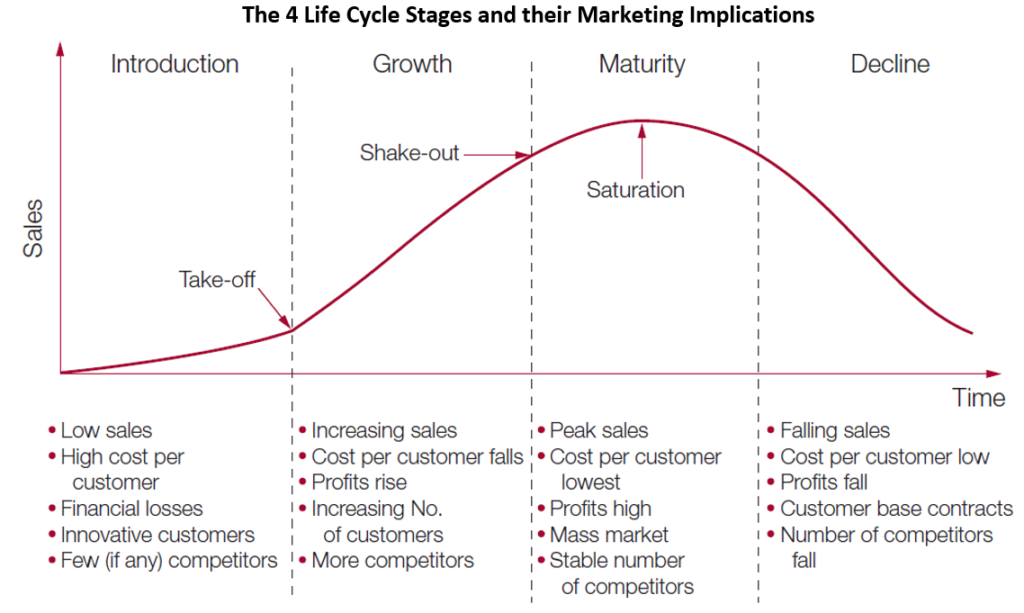
Source: Source: https://marketing-insider.eu/characteristics-of-the-product-life-cycle-stages/
The Product Life Cycle Model was introduced in the 1950s but remains as relevant today, even though people have started producing their variations of this model.
Let us understand the rise and fall of Apple iPod using the Product Life Cycle of Apple iPod.
Introduction Stage of Apple iPod
You might not be knowing this, but Apple did not invent the MP3, it only made it mainstream and popular.
The first MP3 was created in 1997 by a little-known South Korean firm, SaeHan.

First MP3 by SaeHan
However, despite being a late entrant in the MP3 market, the iPod blew away its competition with its advanced capabilities, easy to use click-wheel control, and most importantly, its “cool factor.”
The first iPod launched were basic models having a memory of only 5GB and 10 GB and came with a hefty price tag $399.
However, Apple created a buzz for the MP3 player and its iPod through its brand awareness campaigns, informative television ads demonstrating the benefits and utility of the iPod, and of course, the iPod was marketed to be this cool MP3 player.
This, in marketing terms, was the introduction stage of the product life cycle of Apple iPod.
Growth Stage of Apple iPod
Apple iPod’s growth was mainly triggered by the launch of the iTunes Music Store in 2003 and progressive improvement in the hardware of the iPod. Both these developments increased the storage capacity of the iPod and added additional features to it.
Further, the iPod was offered in attractive colours and adding additional features.
The second and third generation of the iPod did face some competition from firms which targeted the iPod on its size and features.
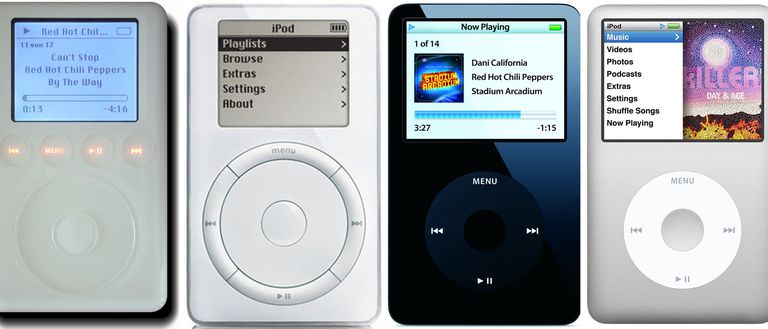
Source: Lifewire
For instance, Archos launched its MP3 player, the Jukebox Multimedia player, which could play songs, display photos and play videos. Also, Creative launched its MuVo line which was much smaller than the iPod.
The MP3 player was becoming one of the fastest growing consumer electronic product since its launch and gained market acceptance at an amazingly fast pace. Expanding the product line became critical as the innovator market was about to reach its point of saturation.
Apple launched the iPod Mini in 2004 to enhance its market appeal. The iPod Mini became a rage among the students and women, mainly due to its small size, a wide range of colour and lower pricing.
Apple introduced the iPod Nano, iPod Shuffle and the iPod Touch over the next three years to drive away the competition from MP3 players such as Samsung’s YP-P2 and Microsoft Zune.
The further expansion of Apple Stores in the United Kingdom and the European Union in 2003 expanded the distribution reach of Apple’s iPod which was limited to supermarkets and big box electronic stores.
During this period, Apple committed about 60 per cent of it's over advertising budget for the iPod, and by 2007, the Apple iPod had a mammoth market share in the MP3 market, with a market share of 72.7%.
And if you begin to see it as a marketer, these are exactly the characteristics of the growth stage of the product life cycle. Your product starts to sell like crazy, you spend more on it in terms of the marketing spend and it does capture a sizable market share.
This sums up the growth stage of the product life cycle of Apple iPod.
Maturity Stage of Apple iPod
The Apple iPod reached its maturity in 2008 with its global sales crossing 54 million units.
According to Michael Porter, a business can achieve competitive advantage in a mature market by adopting either of these three strategies, i.e. focus, product differentiation and cost leadership.
Apple maintained its market share during the maturity stage of product life cycle of Apple iPod by adopting the product differentiation strategy.
Apple continued to introduce new features in every new generation of the iPod and stayed a few steps ahead of its competition. Before the competition could imitate the existing iPod, Apple introduced another latest generation of the iPod with newer and many improved features.
This includes introducing colour screens, video playback feature, camera, Nike+ integration, offering a higher battery life, and much more.
Apple continued to use the existing ecosystem of the iPod and the Apple Music store to develop newer products such as the iPhone, which is the current cash cow of Apple.
Apple also offered seamless integration of the iPod with its other products such as the Mac PC, MacBook, Apple TV, iCloud etc. to enhance the user experience for iPod users.
You as a marketer need to note that this is a common strategy in the Maturity stage of the product life cycle where in you prolong the maturity stage. Or, in other words, delay the Decline stage.
The beginning of the maturity stage can be indicated by Apple’s competitors exiting the market due to their inability to implement any of the generic strategies devised by Michael Porter.
Decline Stage of Apple iPod
Apple iPod’s sales declined to a mere 26 million units in 2013 after reaching its peak sales of over 54 million units in 2008. Apple could not revive the iPod in spite of the introduction of the iPod Nano and iPod touch.
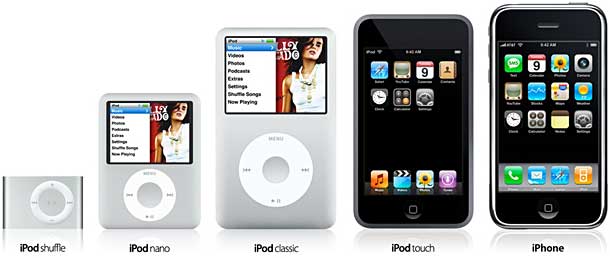
However, this was not a surprise for Apple as Steve Jobs had referred to the iPhone as the best iPod ever build during its launch in 2008.
The success of the iPhone cannibalized the sales of the iPod as the iPhone had all the functionalities of an iPod. It did not make sense for consumers to carry two different devices, i.e. a mobile phone and an MP3 when the Apple iPhone doubled up as a multi-purpose device.
The decline stage of the iPod can be characterized by deep discounts offered by Apple, which generally maintains a premium pricing strategy for most of its products.
It is likely these discounts played a role in the decline sales of the iPod as the iPod followed a different pricing strategy to Apple’s iPhone and iPad.
Bonus: Download this e-book on the marketing strategies used by Apple and other companies across the Product Life Cycle
Conclusion
This was my take on the product life cycle of the Apple iPod. The iPod is an excellent example of the fast-shortening product life cycle of products in the current age of fast technological development.
While the iPod might have lost its credibility as a product, it was listed as one of the best inventions of the 21st Century, and the existing ecosystem of the iPod allowed the development of the iPhone and iPad, the present cash cow of Apple.



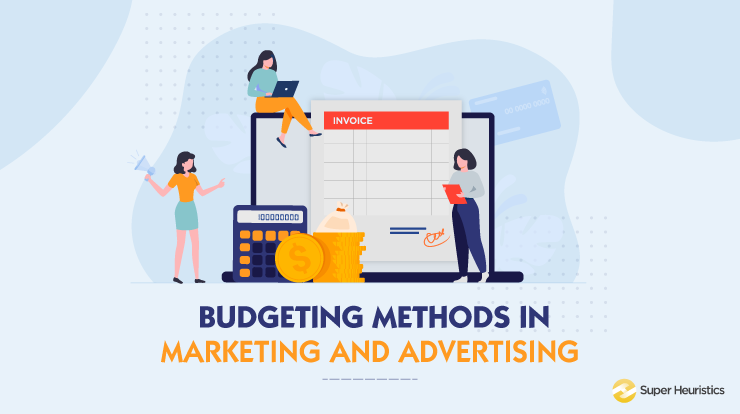



Hi